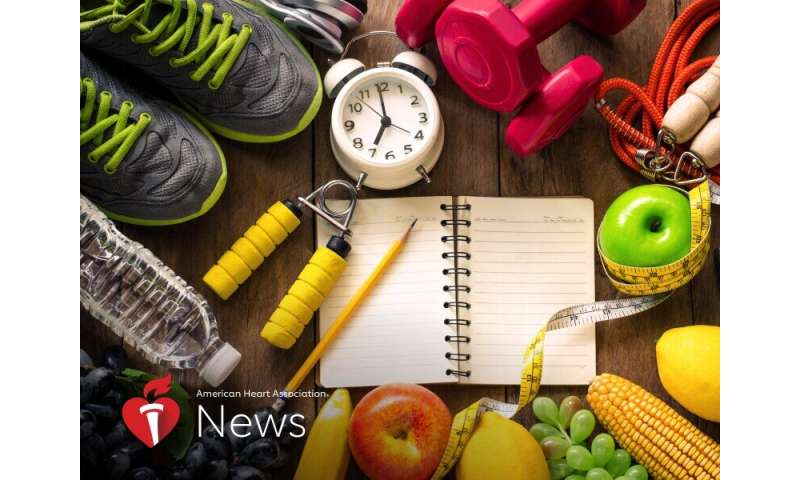Five easy ways to keep tabs on heart health

Tracking a few simple numbers can be a big help in keeping tabs on heart health.
But you need to pay attention to those numbers long before your doctor says they’re an urgent concern, said Nicole Spartano, a research assistant professor in the department of endocrinology, diabetes, nutrition and weight management at Boston University School of Medicine.
She likened it to watching warning signs on a highway: Paying attention now alerts you to problems that might appear down the road.
“Just because you haven’t reached whatever threshold is there for the diagnosis doesn’t necessarily mean you’re in the clear in terms of whatever physiological measure you’re tracking,” she said.
Blood pressure is particularly crucial, said Dr. Raymond R. Townsend, professor of medicine at the Hospital of the University of Pennsylvania.
“There is nothing more important to living longer, and living with a functioning heart and brain, than attending to an elevated blood pressure,” he said. “You need to be sure of what your BP numbers are because if you don’t measure it, you cannot manage it.”
A health care provider can tell you specific targets. But in general, here are some important ones to track.
Blood pressure
Blood pressure is a measure of the force of your blood as it pushes against blood vessel walls. The American College of Cardiology and American Heart Association define normal blood pressure as a reading of less than 120/80 mmHg. Top number, or systolic, readings of 130-139 or bottom, diastolic, readings of 80-89 mmHg are considered Stage 1 hypertension. Consistent readings of 140/90 mmHg or higher are considered Stage 2 hypertension.
Townsend said even in the pandemic, it’s important to work with a health care provider to make sure you’re getting accurate readings.
“If you have access to a home blood pressure kit, we rely on in-home readings to help us manage blood pressure,” he said. Use a validated monitor—a list is available at validateBP.org—and check it once a year against a medical-grade device at a doctor’s office or clinic.
“The key is taking it correctly,” he said. “Even the most validated monitor will yield bad readings if you don’t prepare yourself to have a BP measurement, position yourself correctly, and take the actual readings properly.”
Blood sugar
Also known as blood glucose, blood sugar comes from the food you eat. In a fasting blood sugar test, readings of 100 to 125 mg/dL are considered prediabetes, which means a risk for developing Type 2 diabetes, which can lead to heart disease and stroke. Readings of 126 or higher on more than one occasion are considered diabetes.
Spartano said it’s relatively easy to monitor blood glucose at home. “I wouldn’t say it’s necessary for everyone, but it definitely is of interest to some people. And some of those glucometers do connect to apps.”
Cholesterol
A blood test will show levels of different types of this waxy, fatlike substance in your blood that is linked to cardiovascular disease. A doctor can use these results, along with the other numbers, to give a detailed assessment of heart disease risk.
There are at-home cholesterol tests, but Spartano doesn’t recommend them.
Body mass index or waist measurement
These are measures of obesity. If you know your height and weight, you can use an online calculator, such as the one at the National Heart, Lung, and Blood Institute. And research shows waist-to-hip ratio measurement may be a better indicator of heart attack risk than body mass index, especially in women.
Sleep
Adults need at least seven hours of sleep a night, according to the American Academy of Sleep Medicine and Sleep Research Society. But sleeping too much may be just as harmful as sleeping too little.
Recent research from the Centers for Disease Control and Prevention found sleeping less than six hours a night or more than nine was associated with poorer cardiovascular health.
Overall, Spartano, whose work includes collecting data from fitness trackers for the long-running Framingham Heart Study, said tracking your numbers doesn’t have to be complicated. Apps can help, but the age-old method of writing in a diary works well, too.
The mere act of tracking can help you initiate healthy changes, she said.
She also emphasized the importance of one more number: 150. That’s the minimum weekly number of minutes of moderate to vigorous exercise recommended for adults. But you don’t have to start at that level.
“It seems maybe daunting, but actually the most significant benefit is going from very little to just slightly more activity, and that can be at any intensity level,” she said.
Healthy eating also is crucial, Spartano said.
Source: Read Full Article
